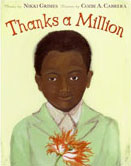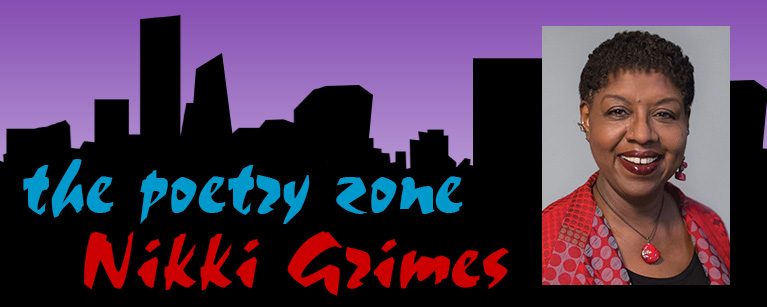 For the longest time, I had the distinct impression that there were precious few women illustrators in the children’s book market. Can you blame me? According to one noted illustrator, a scant 20% of the illustration work goes to women. If that’s true, no matter how you look at it, that’s a pretty low percentage. When you set that percentage next to the rather large, comprehensive list of female artists available today, the percentage seems even more egregious. What’s going on here? Time to ask some hard questions.
For the longest time, I had the distinct impression that there were precious few women illustrators in the children’s book market. Can you blame me? According to one noted illustrator, a scant 20% of the illustration work goes to women. If that’s true, no matter how you look at it, that’s a pretty low percentage. When you set that percentage next to the rather large, comprehensive list of female artists available today, the percentage seems even more egregious. What’s going on here? Time to ask some hard questions.
Questions are what led me to write this particular blog. Recently, I approached the editor of a current work-in-progress about seeking out a female illustrator for one of my new books. The book is written by moi, a woman, and is about women, and so I thought it only right that the book be illustrated by a woman as well. He did not disagree. So, to help matters along, I decided to put together a comprehensive list of female illustrators from which to choose. To build that list, I went on Facebook, suggested I was building such a list, and asked my FB friends who should be on it. The response? A veritable deluge of names! I was pleased, but more than a little surprised. Why did I not have a sense of their presence in the marketplace, I asked myself. I’ve been in this business for more than 30 years, and yet I had no idea of such a dominant female presence. What were the reasons?
Are the skill sets of male and female artists significantly different from one another? A female art teacher I spoke with suggested that, on average, men have a better spatial sense and a better intuitive idea of perspective than female artists, while women, on the whole, are better at drawing figures. I find that argument intriguing. I can personally think of an artist couple I know for whom that is exactly true. But I don’t know how common that is. I do a little painting, myself, but I’ve never attempted illustration, so this is not my area of expertise. Still, it would seem to me, for the many different kinds of books that are produced, more than 20% of them would benefit as much from the skills of a woman as that of a man, whether or not those skill sets differ.
There may be another reason why the lion’s share of illustration work seems to go to men rather than women.
Even a cursory look at the publishing industry will reveal that women dominate the field. How many male editors or art directors do you know? Go on. Count them. If you need more than one hand, I’d be surprised. When it comes to illustrators, which gender do you think a female editor or art director will be inclined to hire? Go on. Be honest. And if that male is cute? Forget about it! I’m not blind. I see all the flirting that goes on between male artists and the women who hire them. Still, I’d never thought about how that casual interplay might impact the selection of illustrators for book projects. (And don’t even get me started on the number of women NOT winning the Caldecott!
Do all male artists flirt? No, not all. Does sexual heat always play into the hiring choice of an illustrator? Absolutely not. To suggest so would be an insult to many outstanding men working in this field who eschew the very idea of using their manly charms to secure a contract. However, to deny that gender preference is, indeed, a factor on many occasions would be, at best, dishonest. That’s not happening here.
So, what is the solution? How can we even the playing field for women artists? That’s a tough one. I have a suggestion, though, a place where we can begin.
We can and should encourage editors and art directors to do a better job of sharing projects with female illustrators. We should raise our voices whenever we encounter this type of gender inequity. And, as authors, we can make a concerted effort to suggest and recommend more female illustrators for our own books. That’s my plan, and I hope other authors will do likewise.
Heck, my own future might include cover art and picture book illustration. If it does, when I venture out into the marketplace, I’d like to find a level playing field. Wouldn’t you?



6 Responses
I have wondered if there is a gender bias in the judgment of what makes good art. I still remember in art school people being criticized for art that looked “too feminine” or praised for “strong, masculine lines”. I have wondered if, as in so many other areas, the male sensibility about things dominates our cultural ideas about what is actually good art, so that female expression gets relegated to second place. It would be interesting to see what the world’s great art would look like if, instead of men, women had been in power for the past 2,000 years.
my morning is happy cos i found your blog.
treasure!
Do you have a husband and kids to inspire you to write new books.
Thanks for writing this, Nikki. As a woman illustrator (and woman author) I’ve noticed this discrepancy for years. The biggest shocker was when I was invited to the 40th anniversary celebration for Reading Is Fundamental in DC. There were around 30 of us illustrators participating and I could count the women on one hand. I felt really out of place in the socializing, but tried to keep up with the guys…
There does seem to be a glass ceiling, but I try not to let it bother me. I just want to be myself and not have to play games to create the life I want to live. I just wish it were not so much of a struggle to get recognition, whereas the “love light” seems to shine more on the guys. All we can do is do our work and know we do our best.
I just found this blog by typing in the question, “Why are there more men in the industry of book illustration than women”? This popped into my head after looking at my new purchase “Artist to artist 23 Major Illustrator Talk to Children about Their Art”. As a public school art teacher in the Mississippi Delta, I often pair male and female siblings to work on projects together. My original reasoning was in hopes of perpetuating their desire to work on art projects at home together, instead of just playing video games. Also this area is so sexist, the arts are viewed as women’s work or trifling play. By paring a male and female together within the same family, it buffers the stigma the male student may feel when wearing a smock to paint or designing jewelry or a painted dress. I know see the inate strengths and weaknesses that both can bring to the easle. I don’t know what the answer is, but I hope to write and illustrate my own books some day. Life takes time, energy and money and men seem to invest far less time and energy at work yet receive more pay.
Nikki, great post. There is always a flurry a of blog posts and talks on Illustration forums, after a Caldecott. (though yours was not about woman and the award, most are this week)
I’ll throw out a few thoughts, inspired by your blog.
Are men viewed, in publishing, as more serious about their art?
Are men just funnier? Easier to work with for the Art Director and Editor, are woman more difficult to work with?
Do men connect better with groups of children, teachers, librarians when out promoting their books?
I do know their presentations can be wild, funny and kids love them.
Are woman more restrained, more self conscious, both in, as suggested before, promoting themselves, and then the book?
While woman Illustrators totally outnumber the men, woman tend to be used more in educational publishing, with many of the larger commercial contracts going to the men.
Male Illustrators tend to be more abstract in their art, woman tend to want to capture the faces and expressions accurately and sweetly, especially if drawing children.
It did seem like “we had come a long way baby”, from a time when most elementary teachers were woman, but the principal and vis principal were men. For some reason, perhaps because of our very makeup, we really haven’t.
It is so hard, when you think something like being an Illustrator (most often a job that requires no actual face time with the publisher, just emails and the odd phone call) would put men and woman on a level playing field, yet it doesn’t. I know many male “working” Illustrators who struggle as much as we woman do to get the every day commercial and educational book contracts, who’s art style is highly realistic or just as “cute” as many of the woman’s, so I am generalizing in the above comments.